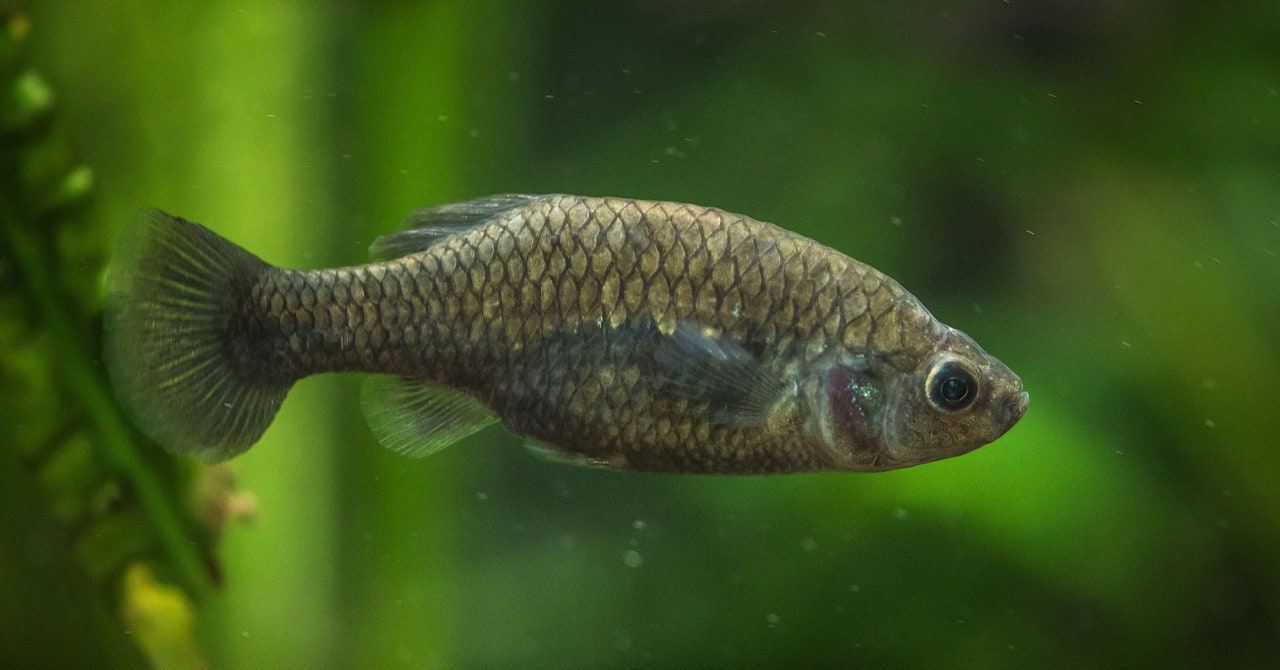
This story originally appeared on Atlas Obscura and is part of the Climate Desk collaboration.
At first glance, there’s nothing remarkable about Mexico’s tequila splitfin fish. Only 2½ inches long, the fish aren’t colorful or poisonous. They aren’t particularly fast. They don’t change colors or exhibit other strange behaviors. In many ways, they are forgettable. So when the fish, endemic to only a single spring-fed river near the Tequila volcano in the Mexican state of Jalisco, went extinct from the wild in 2003, there was no international outcry or even an article in a local newspaper to bid the fish adieu.
But scientists at Michoacán University’s Aquatic Biology Unit knew the tequila fish, as it is commonly called, played an important role in the river’s delicate ecosystem—eating dengue-spreading mosquitoes and serving as a food source for larger fish and birds. When it became clear the fish were dying off in the 1990s, an international team of scientists joined forces to save the fish. After it went extinct in 2003, the team would attempt something that had never been done before in Mexico—reintroduce an extinct species back into its native habitat. Now, almost two decades on, a thriving population of tequila fish, some 2,000 strong, once again call the Teuchitlán River home, swimming in the crystalline waters in the shadow of the tree-covered hillside.
The ambitious conservation translocation project began in 1998 when English aquarist Ivan Dibble arrived at Michoacán University with some very precious cargo—five pairs of tequila fish from England’s Chester Zoo. No one knows exactly why the tequila fish went extinct in the wild, but it was likely a combination of pollution and invasive species moving in, according to scientists at the zoo. In captivity, scientists could provide a controlled environment for the fish.
For 15 years, biologists at Michoacán University cared for the tequila fish. “At the beginning, all these people said we were crazy,” says biologist Omar Domínguez, who worked on the project. While reintroduction programs have been done successfully elsewhere, this was the first time scientists attempted such a project in Mexico. If the project failed, Dominguez worried, “all the people would say, OK, it’s impossible to reintroduce fish.’”
Dibble’s colony of 10 fish grew. In 2012, the team transferred 40 pairs of tequila fish to an artificial pond at the university. They needed to prove that the fish could survive in a semi-natural environment. In the pond, the fish had to compete for food, contend with parasites, and avoid predators like turtles, birds, and snakes, just as they would in the wild. After four years, the school of 80 grew to an estimated 10,000. That success allowed researchers to raise the money needed to take the final step: returning the tequila fish to the wild.
Domínguez knew that the only way to do that successfully was to get the local community in the town of Teuchitlán involved. Without the residents working to clean and protect the river, the fish could again die out. Federico Hernández Valencia, professor of environmental education at Michoacán University, was called in. He quickly got to work with local volunteers like Martha Hernandez and Pilar Navarro, who founded the community initiative Guardians of the River in 2021. As Valencia and local volunteers painted murals of the tequila fish around town, local children chose a nickname for it, landing eventually on “Zoogy,” after the fish’s scientific name, Zoogoneticus tequila. (In the 20th century, many locals called the fish gallito or “little rooster,” because of the strip of bright orange that decorates male fishes’ tails. Some others referred to the fish as burrito, or “little donkey,” says the Guardians’ Perla Espinoza, though she is at a loss to explain why.)


